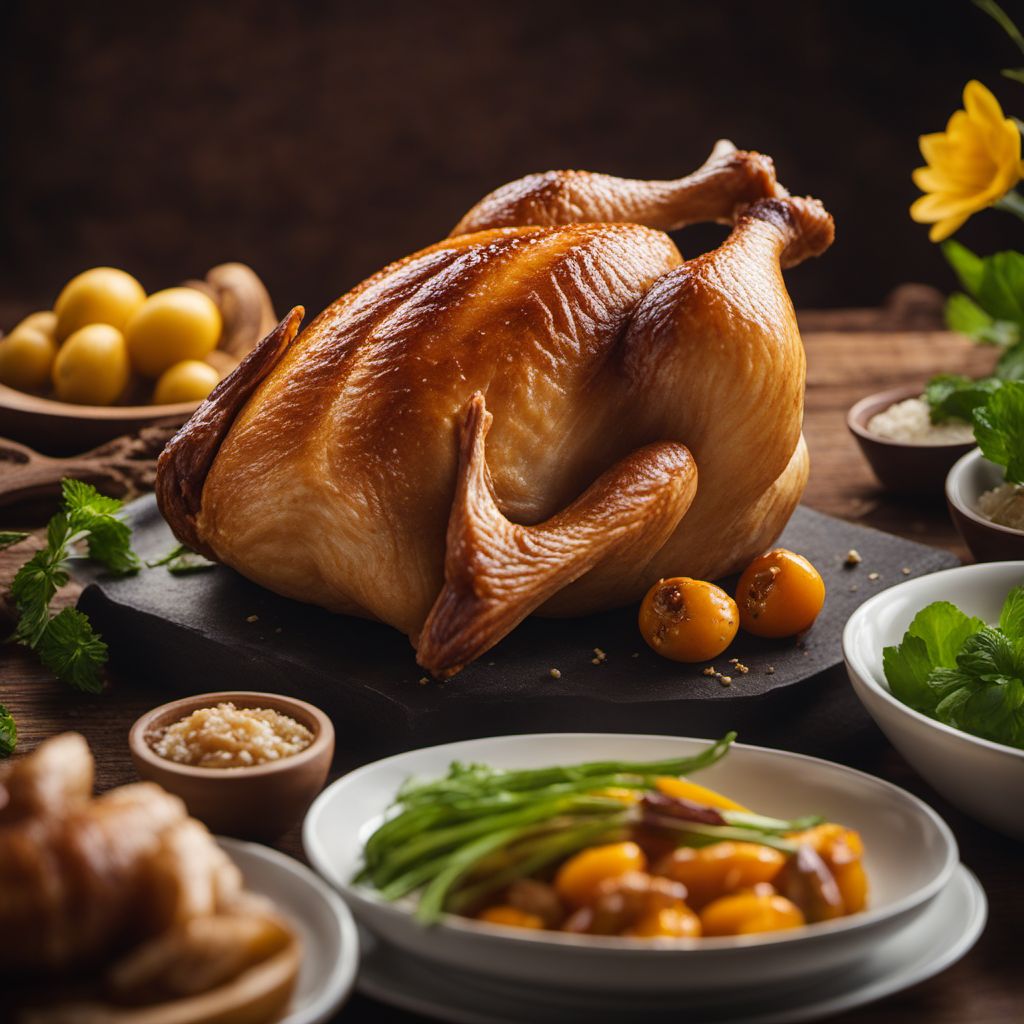
Ingredient
Duck, other slaughtering products
The Versatile Waterfowl
Duck is known for its tender, juicy meat and distinctive flavor. It has a rich, gamey taste with a hint of sweetness, and its texture can range from tender to slightly chewy depending on the cut. The skin is prized for its crispy, golden-brown finish. Duck meat is typically darker and more flavorful than chicken or turkey, and it pairs well with both sweet and savory ingredients.
Origins and history
Duck has a long history in culinary traditions across the globe. It has been consumed for centuries in various cultures, including Chinese, French, and Middle Eastern cuisines. Ducks were domesticated in China around 4000 BC and were later introduced to Europe by the Romans. Today, duck is enjoyed in a wide range of dishes, from classic French confit and Chinese Peking duck to modern interpretations in fusion cuisine.
Nutritional information
Duck is a good source of protein and essential nutrients such as iron, zinc, and vitamin B12. It is also higher in fat compared to other poultry, with the skin being particularly fatty. A 3.5-ounce (100g) serving of roasted duck provides approximately 337 calories.
Allergens
Duck may cause allergic reactions in individuals with poultry allergies. It is important to exercise caution and consult with a healthcare professional if you have any known allergies or sensitivities.
How to select
When selecting duck, look for plump, firm breasts and legs with a generous layer of fat. The skin should be smooth and unblemished, and the flesh should be moist and free from any unpleasant odors. Avoid ducks with dry or discolored skin, as this may indicate poor quality or improper storage.
Storage recommendations
Fresh duck should be stored in the refrigerator at a temperature below 40°F (4°C). If the duck is whole, remove any giblets or innards and place it in a plastic bag to prevent cross-contamination. Cooked duck can be stored in an airtight container in the refrigerator for up to 3 days. To extend its shelf life, duck can be frozen for up to 6 months.
How to produce
Duck can be raised on a small scale by providing a suitable habitat with access to water and a balanced diet. However, it requires specialized knowledge and care, so it is recommended to consult with experts or experienced farmers for guidance.
Preparation tips
Duck can be prepared in various ways, including roasting, grilling, braising, and confit. For roasting, score the skin and season with salt and spices to enhance crispiness. Slow cooking methods like braising or confit can result in tender, flavorful meat. Duck fat can be rendered and used for cooking or as a flavorful addition to dishes like roasted potatoes or sautéed vegetables.
Substitutions
Chicken can be used as a substitute for duck in many recipes, although the flavor and texture will differ. For a vegetarian option, mushrooms or eggplant can provide a meaty texture and absorb flavors well. However, these substitutes may not replicate the unique taste of duck.
Culinary uses
Duck is commonly used in classic dishes such as Duck à l'Orange, Duck Confit, and Peking Duck. It is also popular in stir-fries, salads, and soups. The rendered fat from duck, known as duck fat, is highly prized for its rich flavor and is often used for frying or as a cooking fat for potatoes and vegetables.
Availability
Duck is widely available in many countries, particularly in regions with a strong culinary tradition that includes duck-based dishes. It is commonly found in North America, Europe, and Asia.
